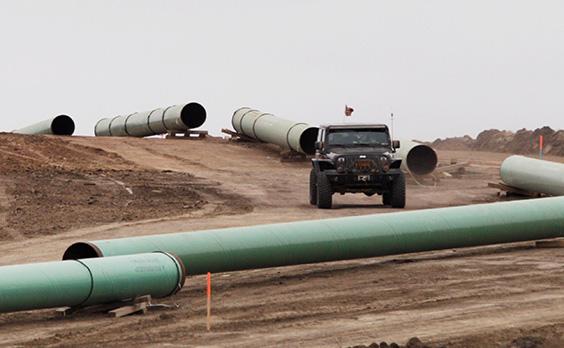Dakota Access Pipeline explained: What is it, why are people protesting it and what happens next?
The pipeline has been the focus of a national controversy
President Donald Trump has signed an executive order to advance the construction of the $3.8bn (£3bn) Dakota Access Pipeline (DAPL) project, saying during the signing that it will be “subject to terms and conditions to be negotiated by us”.
Mr Trump owned approximately $15,000-$50,000 stock in Energy Transfer Partners, the company overseeing the majority of construction of the pipeline, but sold it sometime in the last half of 2016, according to financial disclosures.
He also owned and then sold his shares in Phillips 66, another company responsible for construction according to CNBC. The CEO of Energy Transfer Partners contributed more than $100,000 to President Trump’s campaign and the Republican Party.

What is DAPL?
It is a proposed pipeline that would carry approximately 470,000 barrels of oil over 1,172 miles from North Dakota wells, through South Dakota and Iowa, ending at a shipping port in Illinois. The project was initially approved by the states involved in 2014, but has been met with several months of protest by activists.
What part of the route is controversial?
The proposed route runs under Lake Oahe on the Standing Rock Sioux Indian reservation. Eight other pipelines already run under the lake at varying depths, but protesters say the construction and size of DAPL would put the reservation’s only supply of drinking water at risk of oil spills and contamination as well as harm sacred sites. There is also concern that it would lead to increased carbon emissions.
Proponents of the pipeline have estimated it would create nearly 8,000 jobs, most of which would be temporary, and lead to lower energy costs. It is expected to generate tax revenue for the four states as well.
Back in December protesters celebrated a decision by the US Army Corps of Engineers (Usace) denying Energy Transfer Partners an extension of the pipeline under a Missouri river reservoir, seen by the company as a political delaying tactic by the Obama administration.

What happens next?
It is unclear when construction will actually start now that the Executive Order has been signed, but Trump told carmakers in a meeting held Tuesday morning that he will make it “a very short process ... you’re going to know very quickly” whether projects are approved.
Neither Usace or any federal agency has conducted an environmental impact review of the entire proposed pipeline route, but another executive order was signed Tuesday morning expediting environmental reviews and approvals for all infrastructure-related projects.
Where and by whom construction on DAPL will take place is clear however, with President Trump saying during the signing event “we will build our own pipelines, we will build our own pipes, like in the old days”.
Bookmark popover
Removed from bookmarks